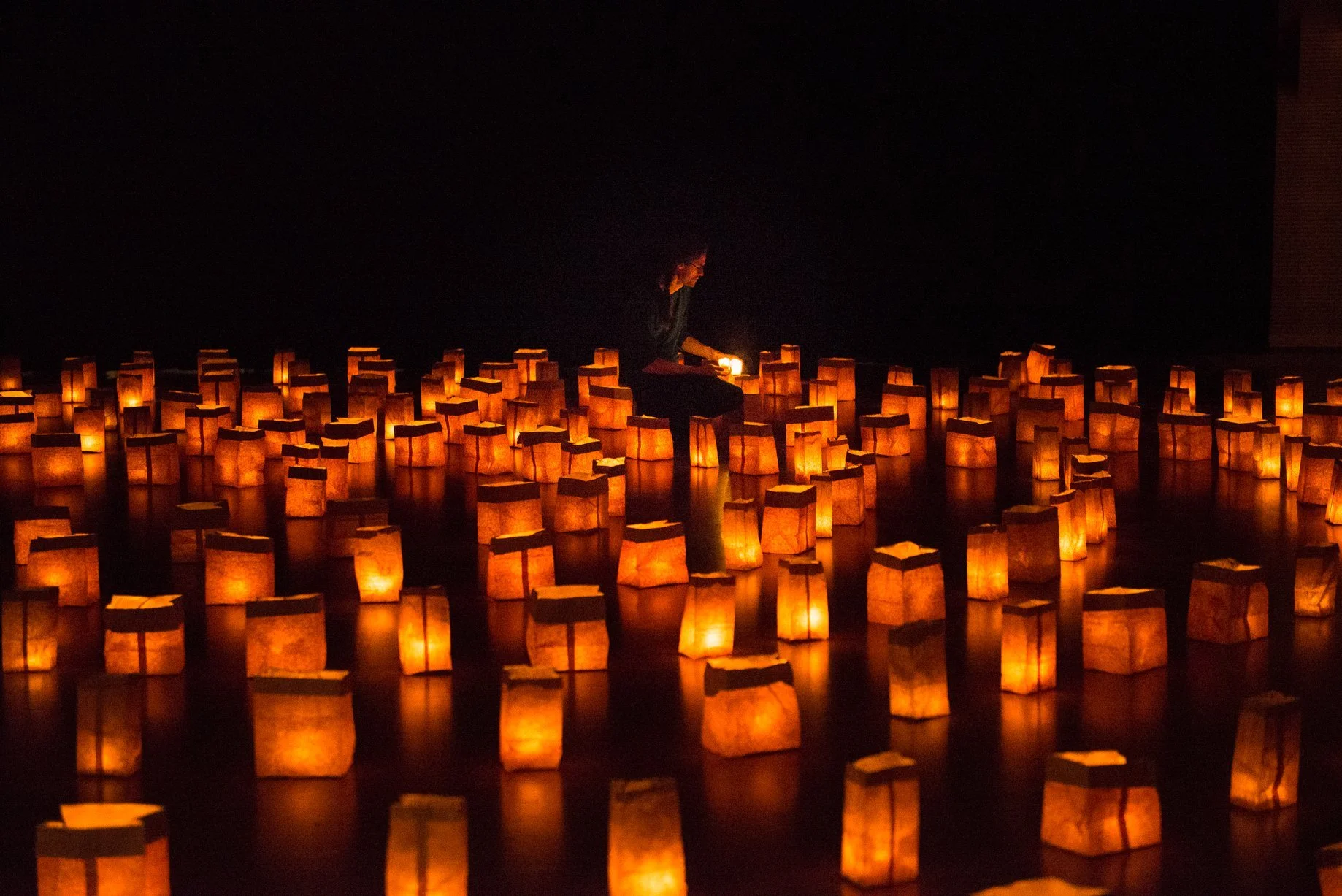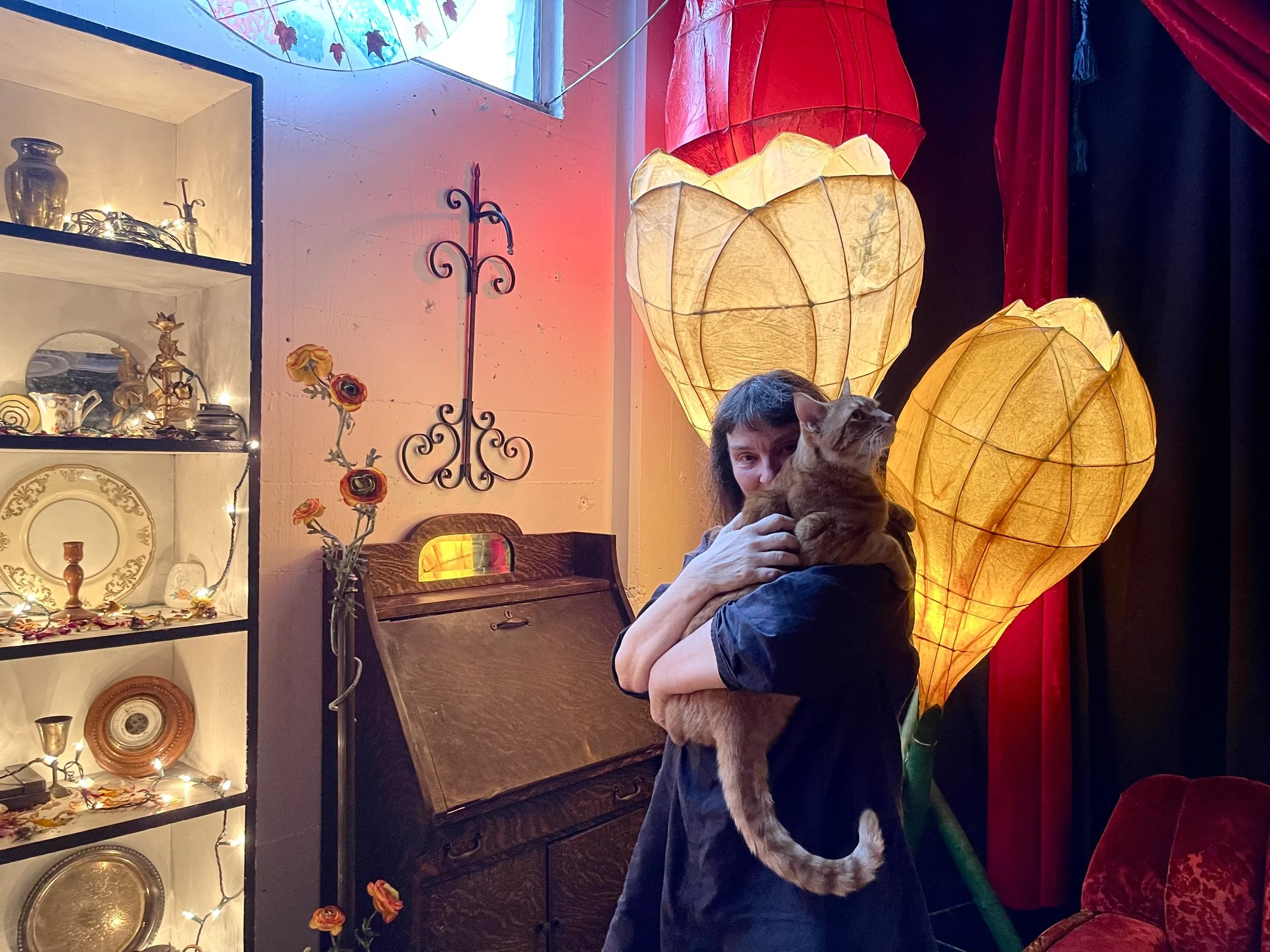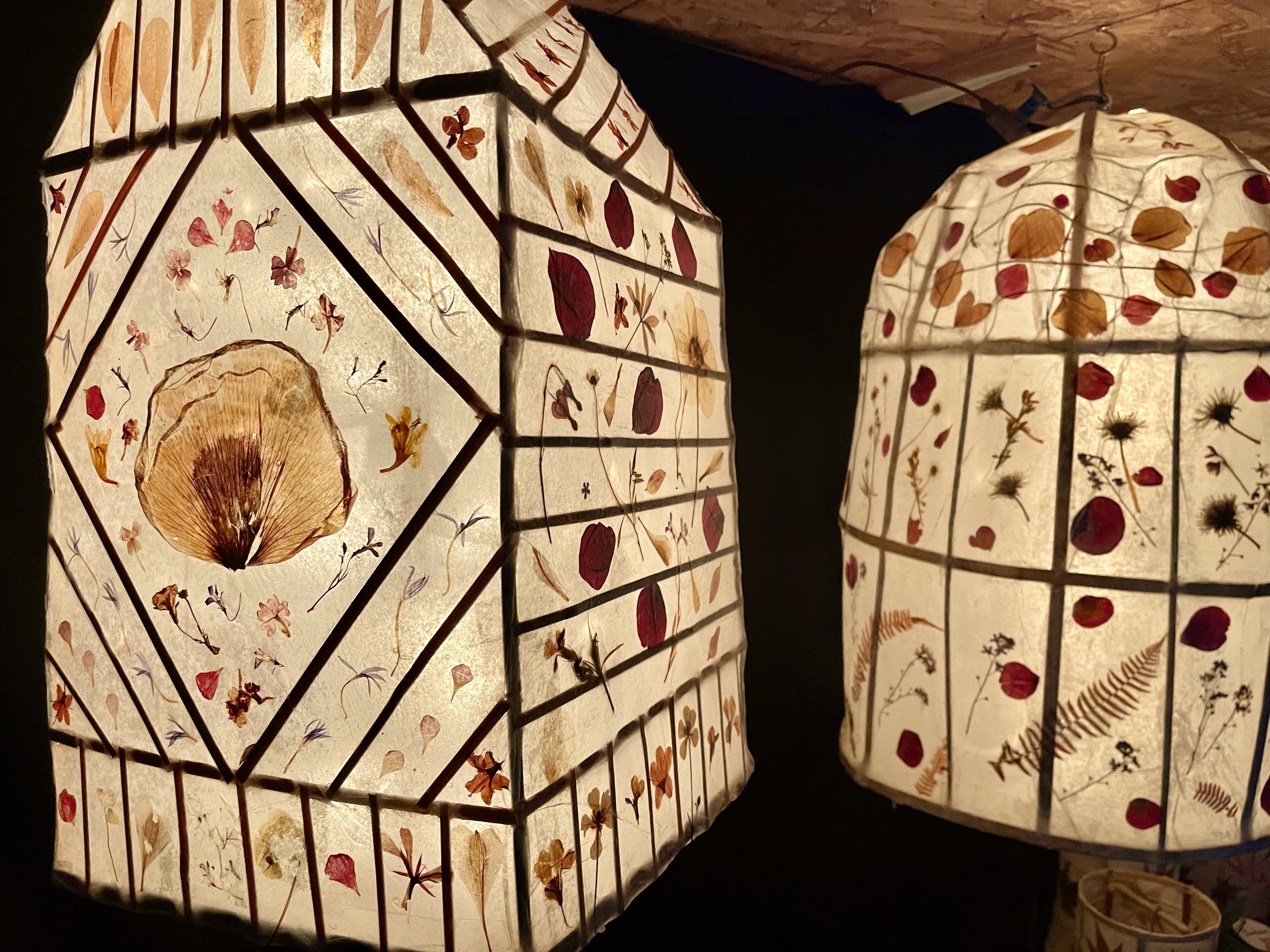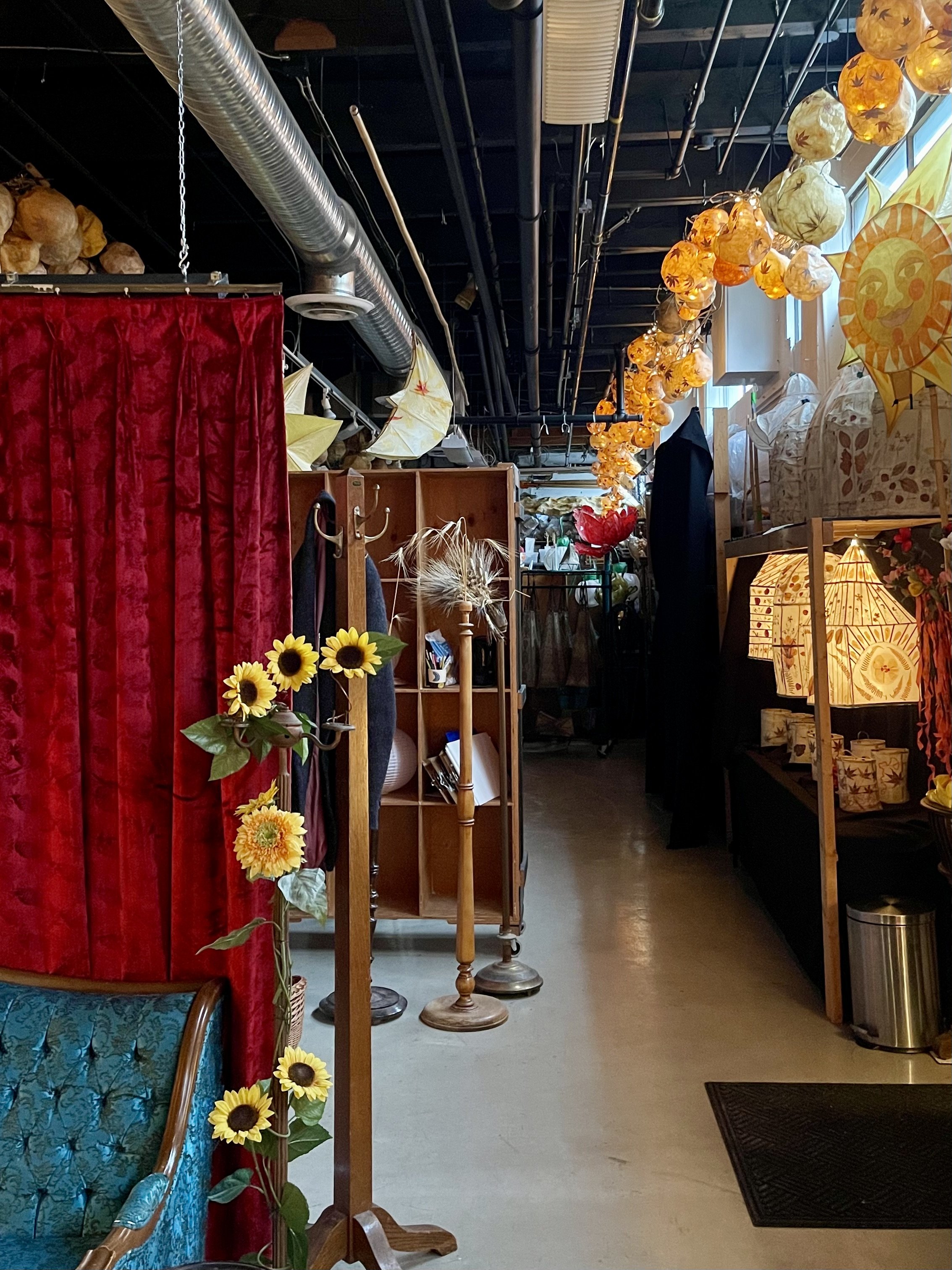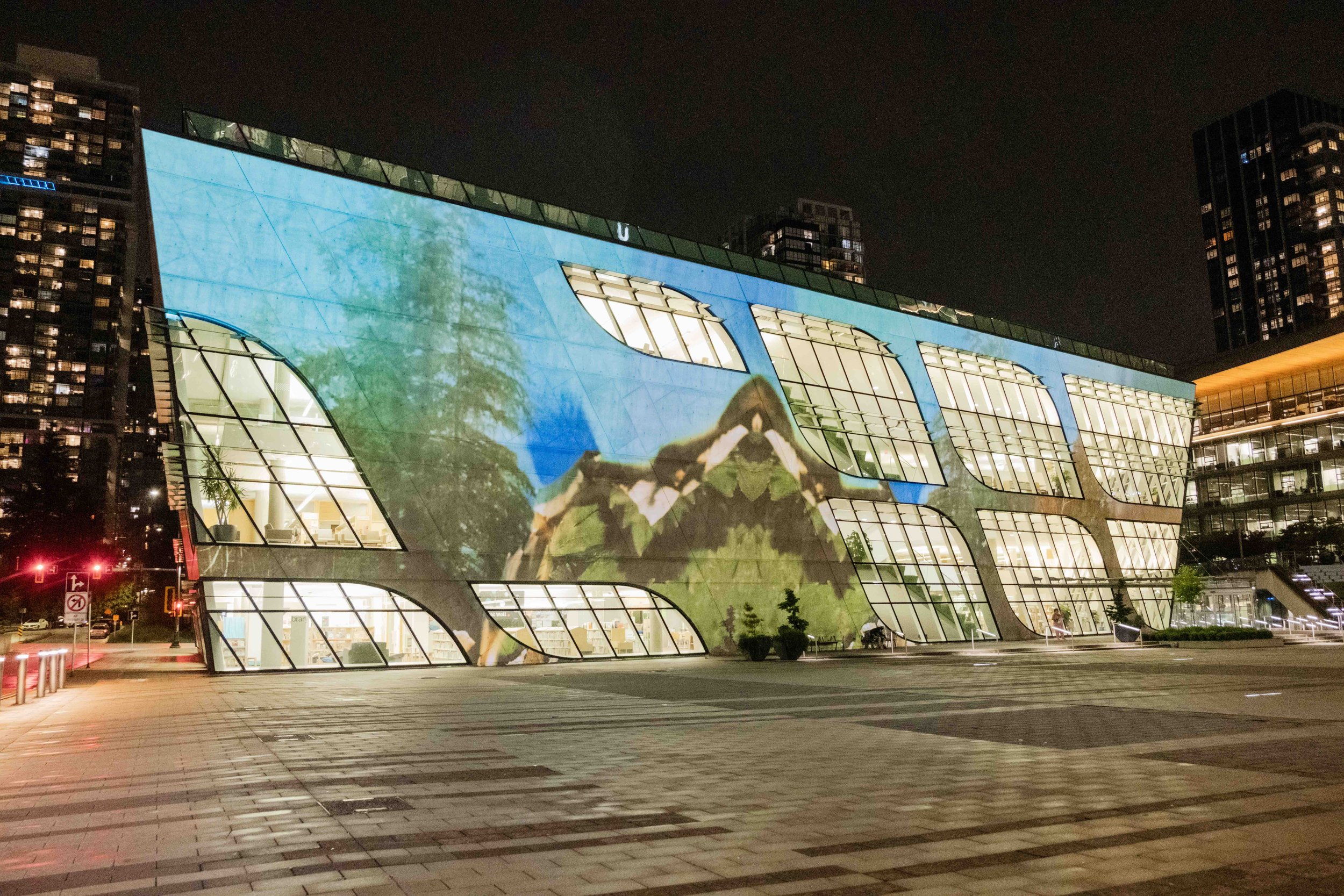Vancouver artist Naomi Singer reflects on Winter Solstice Lantern Festival's history, celebrating 30th anniversary
Nostalgic memories, nature-inspired artwork, and more as Stir visits the Secret Lantern Society’s East Van studio space
Labyrinth of Light at the Winter Solstice Lantern Festival. Photo by Jan Gates
Secret Lantern Society’s 30th annual Winter Solstice Lantern Festival takes place on December 21 from 6 pm to 10:30 pm at Performance Works on Granville Island and the Roundhouse Community Centre in Yaletown, and Secret Solstice Salon Series events take place on December 14 and 16
WHEN I WALK into the Secret Lantern Society’s headquarters in East Vancouver on a chilly December afternoon, Omi the ginger tabby cat greets me. The three-year-old feline, who accompanies founding artistic director Naomi Singer to work every day, is keeping her company as she prepares for the 30th annual Winter Solstice Lantern Festival.
Chatting about the festival’s history ahead of the solstice on December 21, Singer walks around the eclectic 1,640-square-foot studio space she leases from Vancouver Opera in a building on East 3rd Avenue just off of Clark Drive. Other local arts organizations occupy the rooms beside her—the Vancouver International Children’s Festival is next door, while Pi Theatre and the Vancouver Folk Music Festival are above them.
With an operatic solo cutting through the air from the next room of the creative hub, the energy in Singer’s studio, dubbed Secret Headquarters, is warm and welcoming. Antique mantel clocks line a bookshelf, and soothing light emanates from dozens of paper lanterns, vintage lamps, and handmade fixtures. We settle into armchairs in the salon area of the space, which is filled with cozy vintage furniture in reds, teals, and creams. Omi hops onto a sofa, too—Singer scolds him gently for scratching his paws into the ornate fabric.
The Winter Solstice Lantern Festival has prevailed through thick and thin over the past three decades, from a virtual pivot during the pandemic to forging on amid record-breaking blizzards. This year’s edition features lantern-making workshops, salon series offerings, and outdoor lantern processions. One of the biggest draws is the Labyrinth of Light—a winding walkway of 500 handcrafted lanterns glowing emblematically in a dark room.
“Some people have made huge life decisions in the labyrinth, and I’m so honoured that we set it up,” Singer says. “Some people will go through it and say, ‘Hey, that was nice, let’s go for pizza!’ That’s their experience. But other people have decided to get married, have decided to split up, have decided to have a child.”
Naomi Singer with her cat Omi at Secret Headquarters. Photo by Emily Lyth
The festival has come a long way since Singer founded it in 1994 with what was intended to be a three-month artist-in-residence position at the False Creek Community Centre on Granville Island. She had trained at Emily Carr University the decade prior, in a spur-of-the-moment decision inspired by her housemate at the time. While in school, she started organizing concepts and events that brought people together—performance nights, a newspaper, even a parade. That groundwork later helped Singer start the Winter Solstice Lantern Festival.
“As I was working on it,” she recalls, “I was like, ‘The solstice is going to happen every year with or without us. So can we call this the first annual? And if it’s good, we’ve got something to build on. And if it’s horrible, no one’s going to care that there’s not a second annual.’ And they said, ‘Okay, if that’s what you think.’ So that’s how it started. And 30 years later, it’s still going.”
In the beginning, outdoor processions called Secret Lantern Walks were the focal point of the festival. Wielding glowing handcrafted paper lanterns they had made during workshops, two separate groups would start from Leg-In-Boot Square and Vanier Park, and then walk towards each other along the Seawall until they reached the False Creek Community Centre. The longer a procession went on, the bigger it would get, because bystanders and homeowners would see the brightly lit crowd and rush to join in.
“I thought, wasn’t that great symbolism that this is exactly enacting what the solstice is, which is a gradual gathering of the light,” Singer remarks. She would be greeted at the end of the route by a crowd of more than 500 folks for festivities at the centre.
The winter solstice is the shortest day of the year in the Northern Hemisphere. It’s a celebratory milestone, because from that point until the summer solstice in June, the sun stays out a little longer each day. “I’ve got seasonal affective disorder,” Singer says. “I could easily hibernate, and it’s sad, you know? I just thought, ‘I need to remember that the light is coming.’”
After four years, the festival expanded into Yaletown’s then newly opened Roundhouse Community Arts & Recreation Centre to accommodate for its growing popularity. It was important for Singer that the festival had space to thrive, as lantern-making workshops and multicultural performances were hosted indoors. Around the time of the expansion, she established the Secret Lantern Society to help manage the annual undertaking.
Birdcage-shaped nature lanterns made for a wedding by Naomi Singer. Photo by Emily Lyth
During her first years running the festival, Singer didn’t have her own studio space. She would work exclusively out of community centres, packing her supplies neatly up at the end of each winter season. She soon found a space in the industrial area below Southwest Marine Drive near Ontario Street, where she worked above a pipe manufacturer. Since then, she’s found herself bouncing around from lease to lease, trying to stay afloat amid rising costs in the city.
Before finding her current space, Singer worked out of a couple old city-run brick buildings that were slated for demolition; one on Kingsway, and another near West Broadway and Cambie Street where construction on the SkyTrain’s Millennium Line extension is in full swing. She’s now two-and-a-half years into a 10-year lease with Vancouver Opera, which she says she couldn’t be more thankful for.
“I’ve made the best use of each of them, but some of them have been horrendous—you know, dead rats,” Singer divulges of the places she’s rented over the years. “One of them was downtown in what was an old club, and some guy somehow had the right to rent it out to people. He was doing a service for the music community, so he rented out tiny little spaces to all kinds of band members. So it was a hundred percent young guys in bands, and me. And I used to have to clean up beer bottles from the hallways. Everyone was nice, but you know, there’d be trash, and music, and beer bottles everywhere.”
Singer tells me she got the red velvet armchair I’m sitting in, and a matching couch, from the abandoned club. It’s floral print and extra plush, with ornately carved wooden trim. “I’m a great finder of things,” Singer says, “and on the very, very, very last day when there were scavengers in there yanking out the pipes because the building was gonna get torn down, these were still in the hallway.” Naturally, she rescued them.
Heavy floor-to-ceiling blackout curtains line the walls in the middle portion of her current studio. Singer draws one back to unveil stacked milk crates filled with thousands of beeswax candles, which she uses inside her paper lanterns. On the other side of the room, there are shelves full of beautiful nature lanterns, crafted from a bamboo frame, tissue paper, and floral pressings. Singer points out a trio of delicate hanging lanterns shaped like bird cages, which she made for a wedding.
When a candle is placed inside a lantern, it lights up the floral pressings, flickering mesmerizingly. Beeswax flames are best, says Singer—she used to use paraffin tea lights, but they emit cool-toned blue light, and start to make your throat itch and eyes turn red since they’re a petroleum byproduct. By contrast, beeswax candles glow golden yellow, and fill the air with a subtly sweet smell.
“I really believe that nighttime is where religion began, because you’re just small in this vast darkness,” Singer says. “And we don’t experience that. We turn on the lights, and the lights are bombarded on us constantly. And there’s just such beauty in seeing a lantern in a profoundly dark environment. I take lanterns up to the mountain with my friends, and we do our little lantern processions. It’s so unspeakably beautiful. I wish I could share that with everybody.”
A view of Secret Headquarters. Photo by Emily Lyth
Singer abides by the acronym MEOW, meaning Most Everything On Wheels. She’s fastened wheels to the bottom of different vintage mahogany dressers, hutches, and cabinets, so they can be toted around the space to section off areas during salon sessions and events.
The back of the studio space, which she often closes off, is reserved for storage. As we walk past a collection of vintage floor lamps decorated merrily with flowers, Singer notes that some folks find the area chaotic. It’s beautiful chaos, though, with many of the objects found in nature or vintage shops. Everything here serves a specific intention, feeding into Singer’s creative process. She has an eye for charm.
Tucked away in a corner is a little workspace Singer set up for herself. Jars full of collected leaves and flowers line the shelves, and an abandoned wasp’s nest is perched next to them. Singer plucks a thin strip of wispy material away from the nest and holds it up to her work lamp, noting it would make a beautiful lantern.
“One of my main things is achievability,” Singer says. “You can have the most fantastic ideas, but do you have the resources to make that happen? And I’m really good with resources, you know. I can make five dollars look like two hundred dollars.”
Over the last three decades, Singer has been hosting the Winter Solstice Lantern Festival without knowing where the next dollar might come from—an incredibly long run for an organization which subsists largely on city grants.
“It’s this wild mix of optimism, and gratitude, and anxiety,” Singer says of her emotions ahead of the 30th festival. “I just want it to be as good as it can be. I want to not screw up, you know? My failure to do something would result in hardship for somebody down the line, because they didn’t have the right supplies, because I wasn’t organized, or something. So yeah, that’s pretty much the normal state of my mind right now.”
At its peak in the late ’90s, the festival took place across seven community centres in a single year. This time around, though, it’s much smaller than it has been previously, which Singer says is in part due to a recent funding cut at the Roundhouse. But that hasn’t stopped her from amping up the Secret Solstice Salon Series at her studio, which now takes place over three weeks rather than being a single-day event.
In her studio, she points out the chalk evidence of this year’s first salon event, called Walking an Ancient Labyrinth Path. Large-scale line drawings were used to help teach participants about the 4,000-year history of labyrinths. She also shows me a burlap goat mask she’s constructing for the second event, Exploring Winter Traditions of Ukraine.
Two upcoming events close out the pre-festival series this week: Winter Traditions of the Squamish People with Sḵwx̱wú7mesh Úxwumixw (Squamish Nation) Elder S7aplek Bob Baker on December 14, and Dark Tales of Solstice Past with local storyteller Shaughna Born on December 16.
With the main festivities quickly approaching, Singer says she prefers to stay behind the scenes, and has assembled a team of dedicated creatives to help run the festival. She’s also still in the process of recruiting volunteers for this year’s events, who will help with preparing décor, collecting donations, and more.
As for the future, Singer says she has no plans to retire. She’s intent on using her newfound studio space to re-engage in her own artistry, and allow herself more time to create. It’s a good thing, too—the Winter Solstice Lantern Festival has plenty of light yet to give.
“I honestly feel like I’m in service,” Singer shares. “I’m so fortunate to be able to do this, and that people have just come on the journey with me and inspired me to do things in different ways than I would normally have ever set out to do. It’s been super organic for me.”



